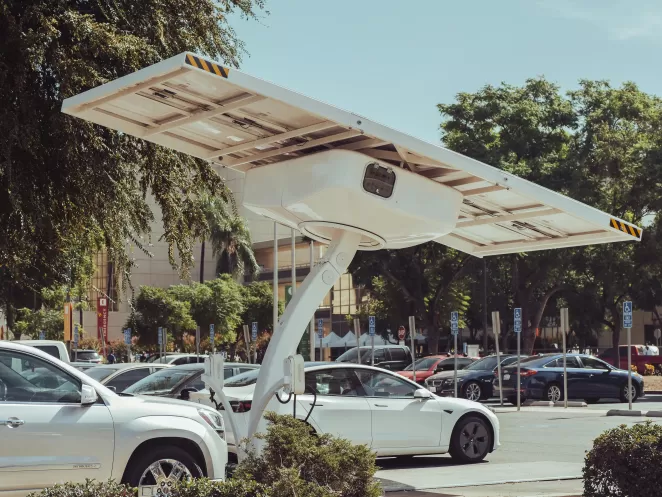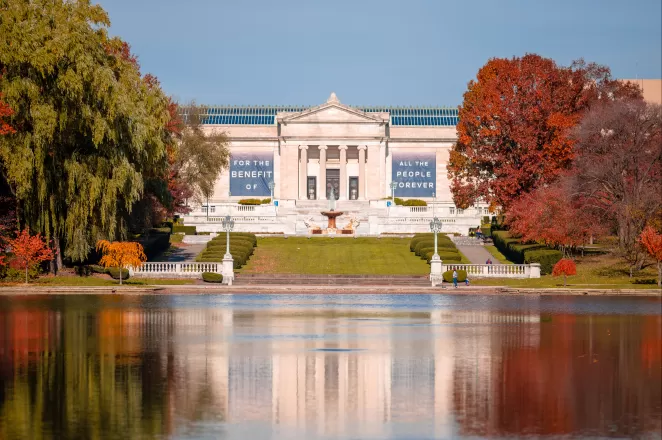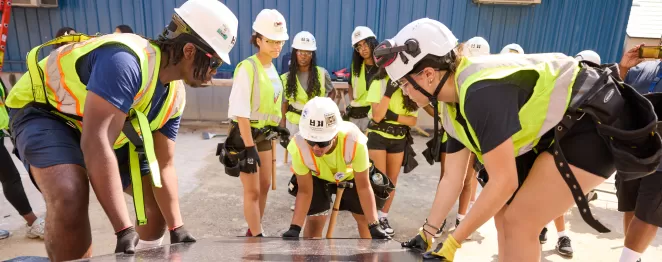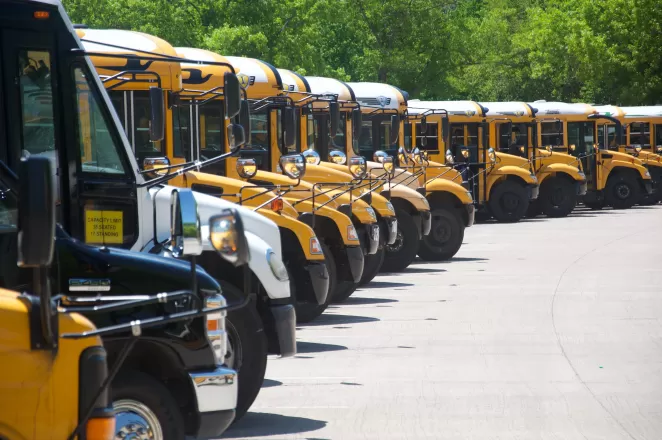How Federal Clean Energy Dollars Are Supporting First Responders
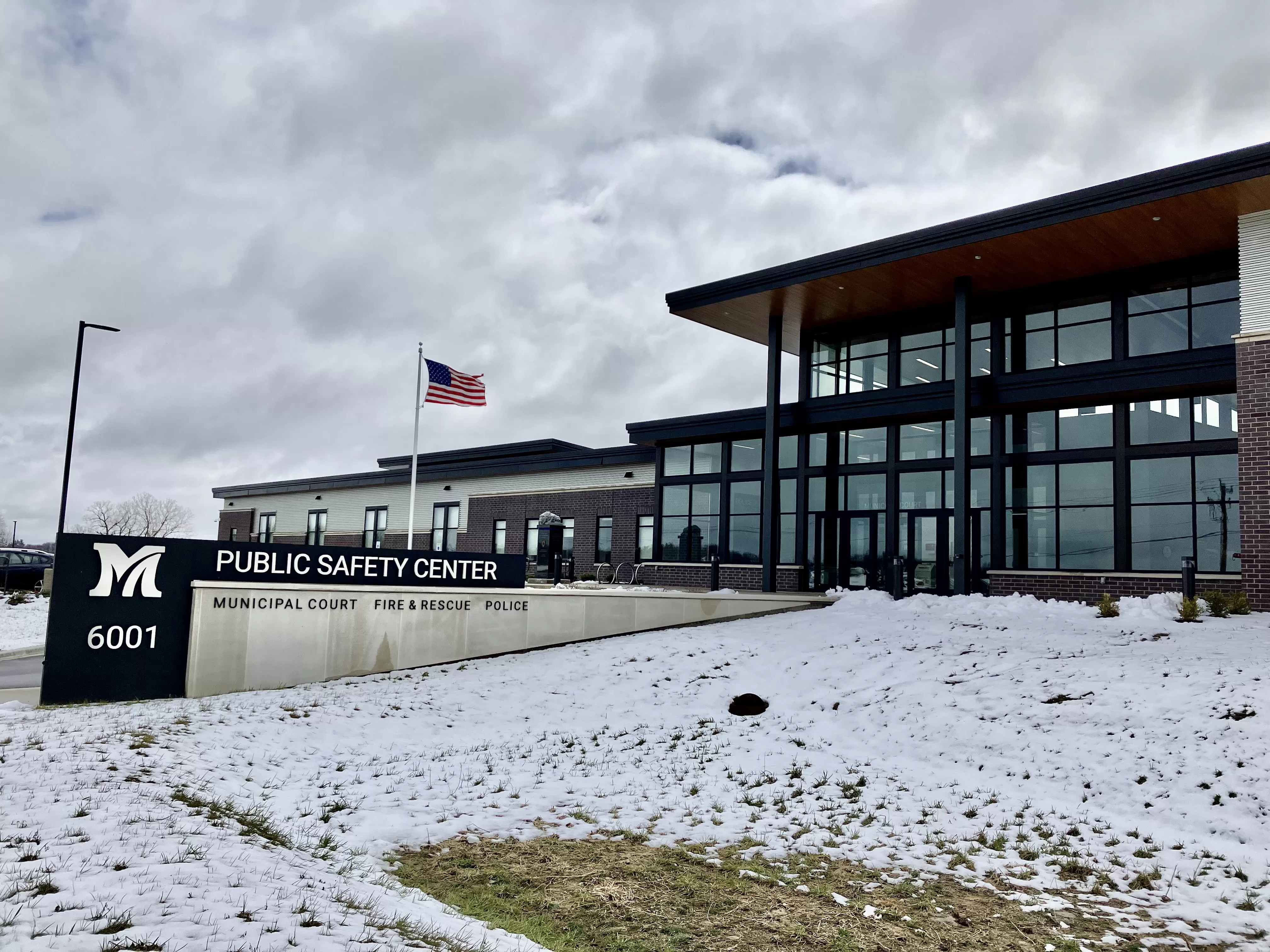
Boosted by clean energy tax credits in the Inflation Reduction Act, a net-zero energy public safety center in McFarland, Wisconsin is benefitting firefighters, police officers, and the wider community.
As a firefighter and paramedic, Ginger Conroy knows a thing or two about conserving energy. 24-hour shifts — followed by 48 hours off — are the norm in her working life. Now, she has a workplace that matches her energy levels.
Her firehouse is part of the brand new Public Safety Center in McFarland, a village of 9,400 roughly 10 miles from Wisconsin’s state capital Madison. Completed in 2023, the net-zero building produces as much energy as it consumes — and looks good while doing it. “I’ve never worked in a building so spacious, well-lit, and modern,” Conroy says. “It’s like living in a castle.”
The building is a far cry from the cave-like municipal center where her Fire & Rescue team used to be housed, with few windows in workspaces and minimal privacy in the living quarters. Now, along with the Police Department, they’ve relocated to the new building, which boasts a state-of-the-art kitchen and lots of natural light.
Even on this cloudy day, daylight streams through the floor-to-ceiling windows, providing comfortable workspaces that need less artificial lighting. “To me, this feels like a much more welcoming environment to work in versus our old station,” says McFarland’s Fire & Rescue Chief Chris Dennis.
The center’s apparatus bay, where its emergency equipment and vehicles are kept.
Nowhere is this felt more than in the apparatus bay, a huge, warehouse-like space that houses fire trucks, ambulances, and equipment, and where the Fire & Rescue team spends most of its time. With a bigger space and larger windows in the new building, the abundance of natural light is a contrast from their previous quarters and something that could make a big difference for the mental health and wellness of those on the team.
Developing an energy-efficient building powered by renewables
McFarland's officials were in the early stages of designing the Public Safety Center building when they decided to make it as sustainable as possible, to lead by example in meeting the goals laid out in the Village’s Climate Action Plan, like reducing climate pollution from buildings. They hired an energy consultant to see if solar power and geothermal energy could get the building to net zero.
While McFarland residents will have to wait until late 2024 to know if their new building is officially net zero (twelve months of utility data are needed to apply for certification), the impressive array of solar panels on the rooftop suggests it will have no issue.
![]()
The solar array atop the McFarland Public Safety Center.
A network of pipes in the basement brings geothermal underground heat to energy-efficient heat pumps and radiant floor heating, which keeps the building comfortable even on cold winter days. In fact, the building is running on 200 amps, which is less electricity than what some large homes require to run, so even when snow is covering the solar panels (a common occurrence in cold weather climates), the building’s holistic design makes it so that the building’s energy demand is low and can be offset by on-site generation.
There are many more features that help keep energy usage low. Some are what you’d expect from an energy-efficient building: the lights are all on timers or sensors, and ceiling fans in the bays keep heat circulating. But this being a fire station, there are features meant to reduce energy use that most people may not think about: rather than use an energy-intensive oven to dry fire hoses like other stations, McFarland uses a contraption where the hoses are pulled up a well and air-dried.
More benefits than just efficiency
Beyond the innovative building systems, the new Center has also improved health and safety for the fire staff. Those systems include an indoor extractor fan that immediately kicks in to suck away carcinogenic exhaust fumes the moment a fire truck is turned on.
But comfort is the real winner across the board for employees. On the police side of the building, increased natural light has made all the difference. In the old building, the administrative area only had one window — facing the hallway. Now, large windows let in plenty of light. The old squad room, too, “had zero natural light coming in; it was completely lit by lights from the room,” says Police Chief Aaron Chapin. In the new space there are high windows all around, allowing natural light to come in, thus reducing the need to turn on the lights and saving energy costs. “It’s very healthy for the officers to be able to have that when they’re working on reports and things like that. There’s a significant difference from this building to where we were before,” Chapin says. The officers even eat lunch there together, which is great for team bonding; where they didn’t even have a full kitchen in the old building, now they’ve got a fully electric one with an induction stove.
McFarland Police Chief Aaron Chapin plugs in an EV using one of the center’s chargers.
There are also EV chargers in the police bay, with outlets primed for additional chargers in the future, as well as wiring for chargers in the parking lot. In fact, the entire building was “built for future growth,” according to Chapin, with empty rooms waiting for future staff. This ensures that the building can be used for a long time.
In addition, the building functions as an emergency operations center, providing an essential service to the community. Village officials are studying adding battery and microgrid components to the building to increase the resilience and operating capacity during emergencies. “One of the benefits we recognize of it being a public safety center is, if we have a grid outage or a natural disaster happens, the more resilient that building is, then it doesn’t impact the people that are providing the services during that emergency,” says Andrew Bremer, Community & Economic Development Director for the Village of McFarland.
Tax credits and lower energy bills mean big savings
The advantages of the building extend to financial benefits. While the $22 million upfront cost may seem high, there are two reasons why it won’t be breaking the bank. The first is that the operating costs of an energy-efficient, net-zero building are substantially lower than a traditional one, which means McFarland will save money each month on electric bills. These savings are put into a general pot of funding used for employee wages and other services the village provides — and can act as insulation against future cuts.
The second reason is that McFarland is hoping to recoup about a million dollars through the Inflation Reduction Act (IRA), which has made large amounts of federal funding available for clean energy projects. “It’s definitely providing the financial incentive to reduce the upfront costs to make a project a go,” Bremer says of the IRA.
McFarland is taking advantage in particular of Direct Pay, also called Elective Pay. This new benefit enabled by the IRA allows tax exempt entities like local governments to utilize tax credits as cash refunds for eligible clean energy projects. McFarland expects to receive about 5 percent of their project costs back from the IRS. Direct Pay has only been possible since the IRA was passed in August 2022, providing a huge opportunity for cities, counties, nonprofits, and other tax-exempt entities to receive incentives for developing clean energy projects.
The lobby of McFarland’s Public Safety Center.
Helping others get there
Because it was planning this project before the IRA was passed, McFarland will be one of the first municipalities to take advantage of IRA tax credits for a building that’s already completed, paving the way for others to follow.
The Public Safety Center has already attracted interest from school districts and police departments who want to replicate McFarland’s success. Even McFarland itself is using this building as an example as they redesign their old municipal building into a net-zero community center — perhaps the strongest sign that this building is doing what it’s supposed to.
While the climate benefits of a net-zero building are undeniable, that alone won’t be enough for some to make the switch. But McFarland has demonstrated that with net zero comes numerous other benefits. “In fire departments, there is a stigma with going net zero that you’re sacrificing comfort, but we’ve seen the opposite happen,” Dennis says.
A comfortable space in a resilient, high-performing building means that staff can better do their jobs of keeping the community safe. With “the capacity to field any emergency that comes in,” as Conroy says, this building is proving that net zero can benefit the entire community.

